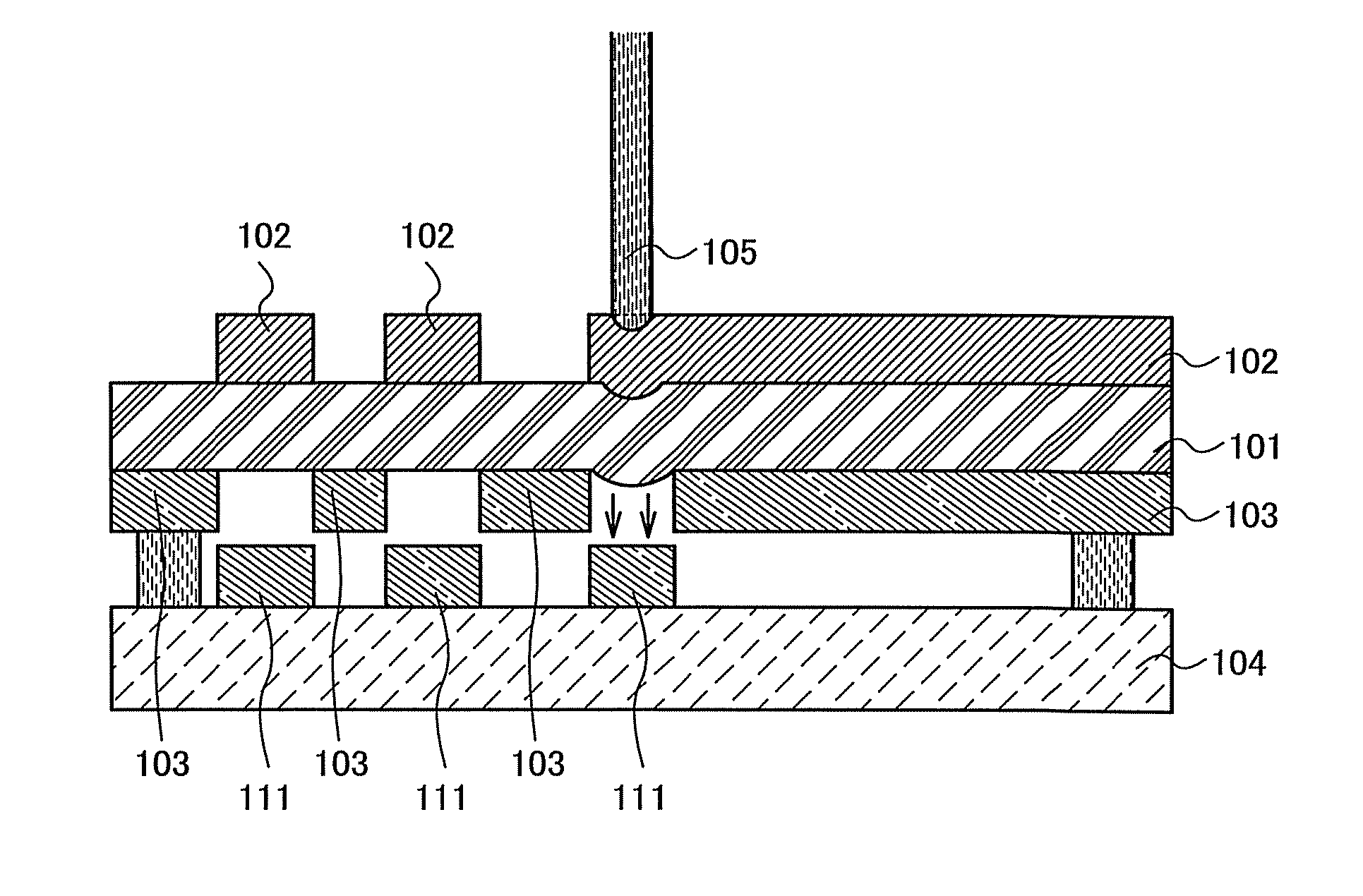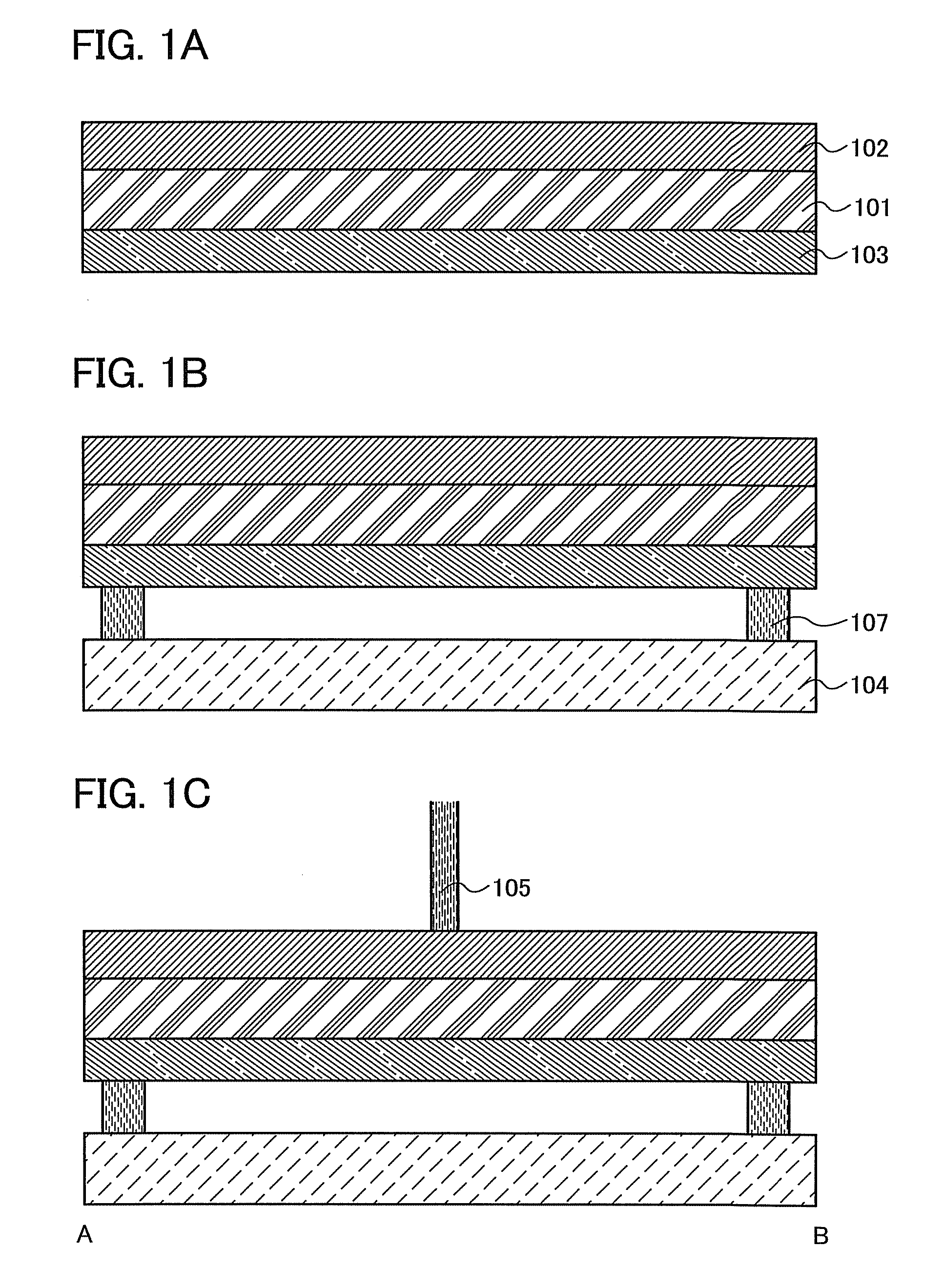Film formation method and method for manufacturing light-emitting element
a technology of light-emitting elements and formation methods, which is applied in the direction of instruments, diffusion transfer processes, electric/magnetic/electromagnetic heating, etc., to achieve the effect of high directivity
- Summary
- Abstract
- Description
- Claims
- Application Information
AI Technical Summary
Benefits of technology
Problems solved by technology
Method used
Image
Examples
embodiment 1
[0035]This embodiment is described with reference to FIGS. 1A to 1C, FIGS. 2A to 2C, FIG. 3, FIGS. 4A and 4B, and FIGS. 5A to 5C.
[0036]A metal film 102 is formed over an elastic substrate 101. Further, an organic material 103 is deposited onto a surface of the elastic substrate 101 which is opposite to a surface thereof where the metal film 102 is formed (see FIG. 1A). The organic material 103 is an EL material which includes at least one of a material for a light-emitting layer, a material for an electron-injecting layer, a material for an electron-transporting layer, a material for a hole-injecting layer, and a material for a hole-transporting layer. Note that a buffer layer may be provided between the elastic substrate 101 and the organic material 103. As the elastic substrate 101, a substrate which is deformed by application of external force and returns to its original shape by release of the external force is used, and in addition, a material in which a shock wave propagates i...
PUM
| Property | Measurement | Unit |
|---|---|---|
| thickness | aaaaa | aaaaa |
| thickness | aaaaa | aaaaa |
| thickness | aaaaa | aaaaa |
Abstract
Description
Claims
Application Information
 Login to View More
Login to View More - R&D
- Intellectual Property
- Life Sciences
- Materials
- Tech Scout
- Unparalleled Data Quality
- Higher Quality Content
- 60% Fewer Hallucinations
Browse by: Latest US Patents, China's latest patents, Technical Efficacy Thesaurus, Application Domain, Technology Topic, Popular Technical Reports.
© 2025 PatSnap. All rights reserved.Legal|Privacy policy|Modern Slavery Act Transparency Statement|Sitemap|About US| Contact US: help@patsnap.com



